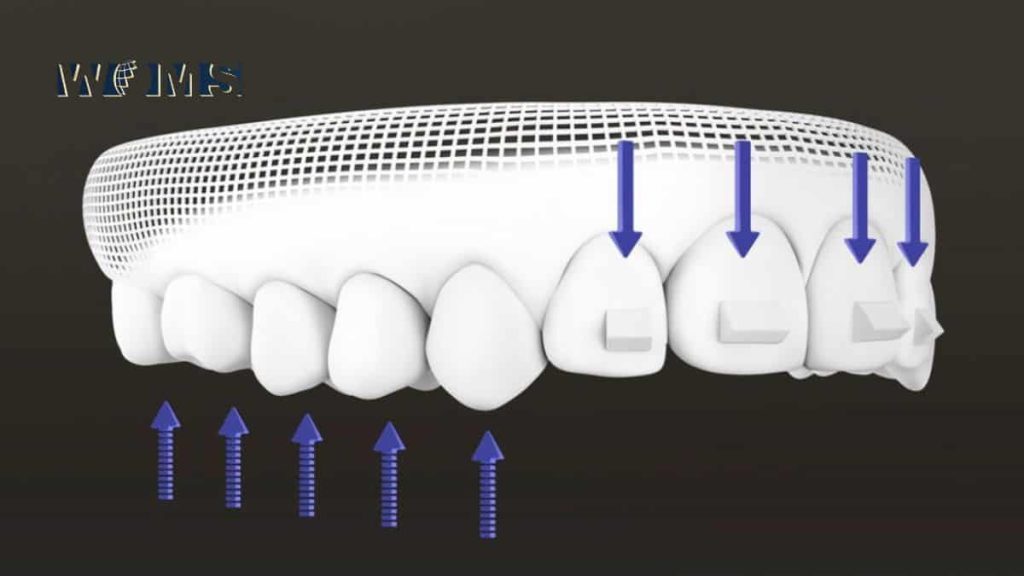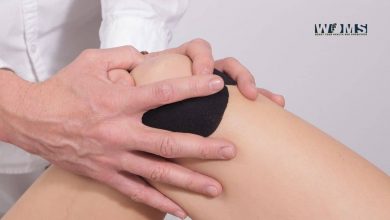Invisalign Attachments: What are they and how do they work?

What are Invisalign attachments and how do they work?
Invisalign uses a series of clear, plastic aligner trays to gradually straighten and realign your smile. But in some cases, these aligner trays need a little extra help to move your teeth into the perfect position. This is where Invisalign attachments (also known as buttons) and elastics come in, helping to make your treatment faster and more effective.
In this article, we explore what Invisalign attachments are, how they work and why they are needed in certain teeth alignment and correction cases.
What are Invisalign attachments?
While Invisalign aligner trays are very effective, sometimes they cannot achieve the desired alignment changes and corrections on their own. In these cases, Invisalign attachments provide the added force and guidance needed to get the best results.
Invisalign attachments look like small tooth-coloured ‘buttons’ that are fixed directly onto the tooth using composite bonding material. These little buttons can vary in shape, from square to circular to triangular, depending on the issues they’re being used to address.
Your dentist will carefully plan out where to place the buttons in order to give your aligners the extra grip and control they need to shift the teeth into the right position. The attachments can also be used as anchor points for Invisalign elastics, which are often used in bite correction cases.
Unlike the aligner trays, Invisalign attachments aren’t removable and will stay firmly in place until removed by your dentist.

How do Invisalign attachments work?
In some cases, the angle, shape, or size of a tooth makes it difficult for the aligner tray to apply the amount of pressure needed to effectively reposition the tooth. An Invisalign attachment works like an ‘anchor’ on the tooth to better direct the pressure of the aligner tray and guide the tooth’s movement.
Invisalign attachments are designed to sit underneath your aligner trays and click into them at specific spots. This allows the trays to fit more snugly against the teeth but it can also make your trays a bit more difficult to put in and take out.
How are Invisalign attachments put on the teeth?
Generally speaking, Invisalign attachments are typically cemented to the middle of the tooth for the best control.
So, how are Invisalign buttons put on? It’s a quick, easy and pain-free process:
- The surface of the tooth is prepped and cleaned by the dentist
- Using an Invisalign template, the dentist marks the exact placement of the attachment onto the tooth
- The special button moulds on the Invisalign template are filled with tooth-coloured bonding material
- The template is then put over the teeth and a special blue light is used to harden and cure the button
- The dentist then removes the template and buffs away any excess bonding material so all that remains is the button, securely fixed in place
Are Invisalign attachments removable?
While you can take your aligner trays out to eat, drink, brush and floss, Invisalign attachments don’t offer the same level of freedom. Since they are firmly bonded to your teeth, they cannot be taken off until your dentist deems they’re no longer needed.
But the good news is that removing Invisalign attachments is as quick and easy as attaching them. When the time comes, your dentist will gently buff the button off your tooth using a special tool, leaving the surface of your tooth smooth and undamaged.
What are Invisalign elastics?
Invisalign elastics look like small rubber bands and can come in a variety of colors but most wearers tend to go for clear elastics as they are less noticeable in the mouth.
Like buttons, these small bands provide added force and guidance to your Invisalign aligner trays. They are attached to the teeth using either Invisalign attachments or special anchor points or ‘hooks’ built into the aligner trays.
Invisalign elastics are typically used in bite correction cases, helping to connect the top and bottom rows of teeth and guide the bite into proper alignment. Generally, one rubber band will be worn on each side of the mouth, fixed to a lower molar and an upper eye tooth.
What issues do Invisalign attachments and elastics help to treat?
Invisalign attachments and elastics are often used in cases that require more complex realignment and corrections, such as:
- Bite corrections, such as overbites, underbites, open bites and crossbites
- Tooth rotations
- Intrusions
- Extrusions
- Crowding
- Spacing
Are Invisalign attachments and elastics noticeable?
Since they are made from tooth-colored bonding material, Invisalign attachments are designed to blend in with your teeth as much as possible. Likewise, the clear Invisalign elastics are fairly discreet in the mouth.
However, they are not invisible. Others will be able to notice them on your teeth if they look closely enough. But the good news is that they are very small and are still far less noticeable than metal braces!
Do Invisalign attachments hurt?
While it does not hurt to put on or remove Invisalign attachments, they may cause a little discomfort while they’re on your teeth.
Since they stick out from the surface of the teeth, they can irritate and rub against your cheeks and lips when you’re not wearing your aligners. However, this irritation is usually alleviated when the aligner trays are put back in as they create a smooth layer over the top of the attachments.
Some patients also say that Invisalign attachments can make it a little more painful and difficult to put in and remove their aligners.
How do I know if I need Invisalign attachments?
Your Invisalign dentist will decide whether you need attachments, how many you’ll need and which teeth they will be placed on, depending on the issue being addressed. They’ll also advise whether you’ll need to use Invisalign elastics too.
But don’t worry! Not every tooth needs an attachment and usually, you’ll only be required to wear them for a portion of your treatment time. Some patients may not require any Invisalign attachments at all particularly if their case is less complex or if they only require minor adjustments and alignments.




